Honeywell Air Quality Monitor HAQ
Hi, Habr! I decided to again take part in testing products from the “Dadzhet” range, and here you have a story about the Honeywell HAQ air quality monitor.
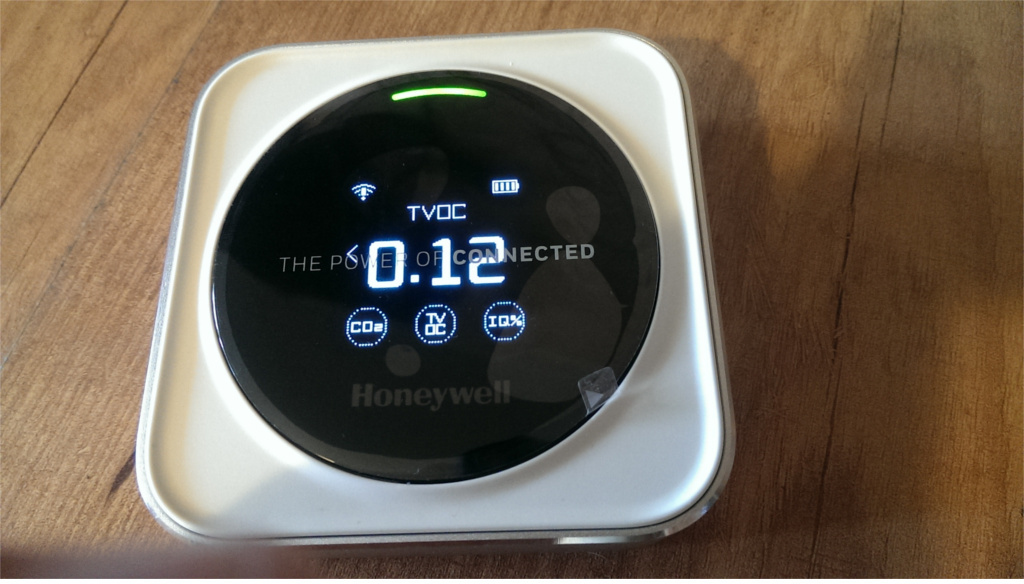
The package of the device includes: a package, a box, an instruction manual, the device itself, shock absorbers for transportation, a Micro USB cable (it is not clear why it is not a Type-C after all).
')
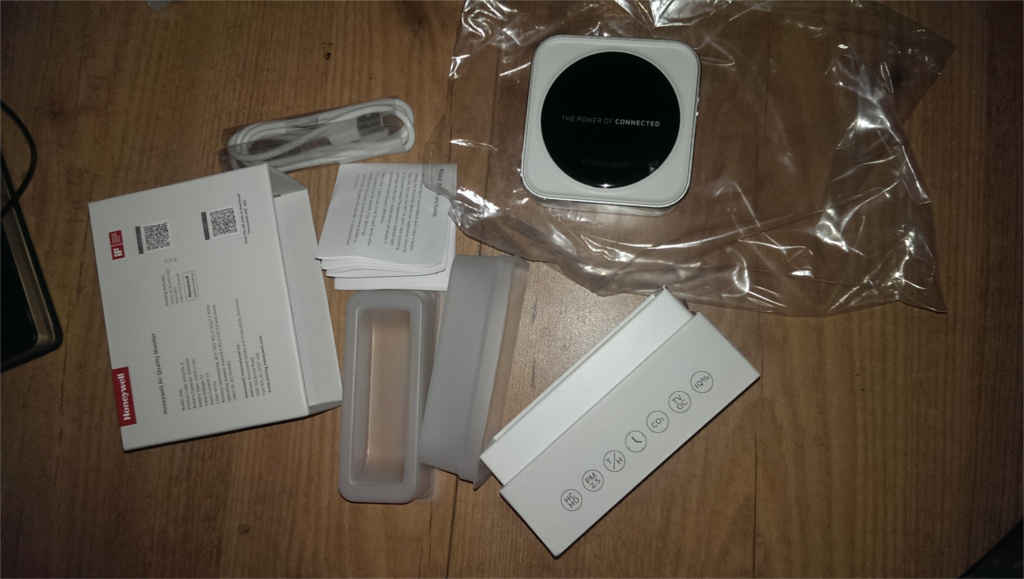
First of all, my hands itched to drive the device through lsusb, and - nothing. From USB, it can only eat. But with the "top-level computer", as the classics say, it can be connected. Only in a different way.
View from two sides:
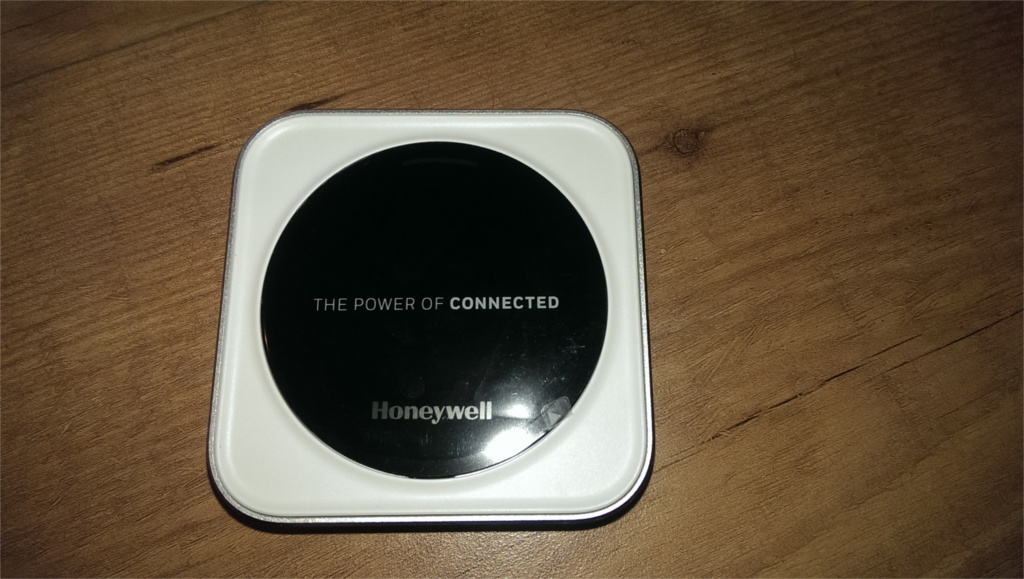
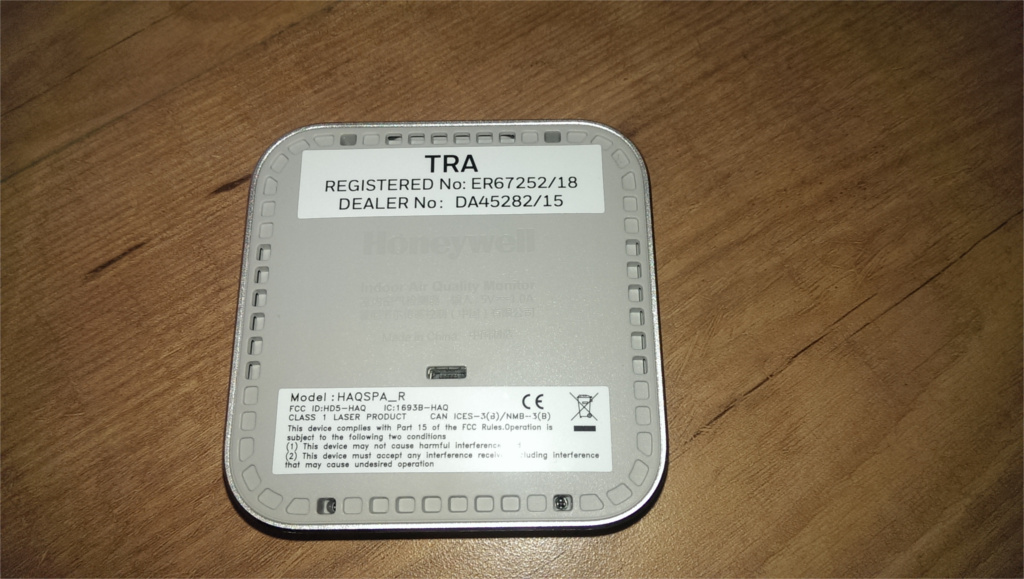
Also “lass 1 laser product” is not a glow lamp, as in a carbon dioxide detector .
After charging from a power supply unit with a load capacity of at least 1 A, the device operates from an internal battery. At the same time, a very quiet fan continuously rotates in it. There is nothing to cool inside, but the sensors work more efficiently if the air is forced through them.
The display of the device organically combines two technologies: one beginning of zero - PMOLED (flickers strongly, but the viewing angle is huge), the other - modern: a capacitive sensor (most likely not a matrix sensor, but from the platforms in those parts of the screen that need to be touched). When shooting flicker unnoticed. Above the display is a two-crystal LED (as ALS331A).
Six measured parameters are divided into two screens, between which you can switch by clicking on the flashing "blinkers". On each of the screens, you can click on the parameter icon, and its value will be displayed.
Particles less than 2.5 microns in diameter:
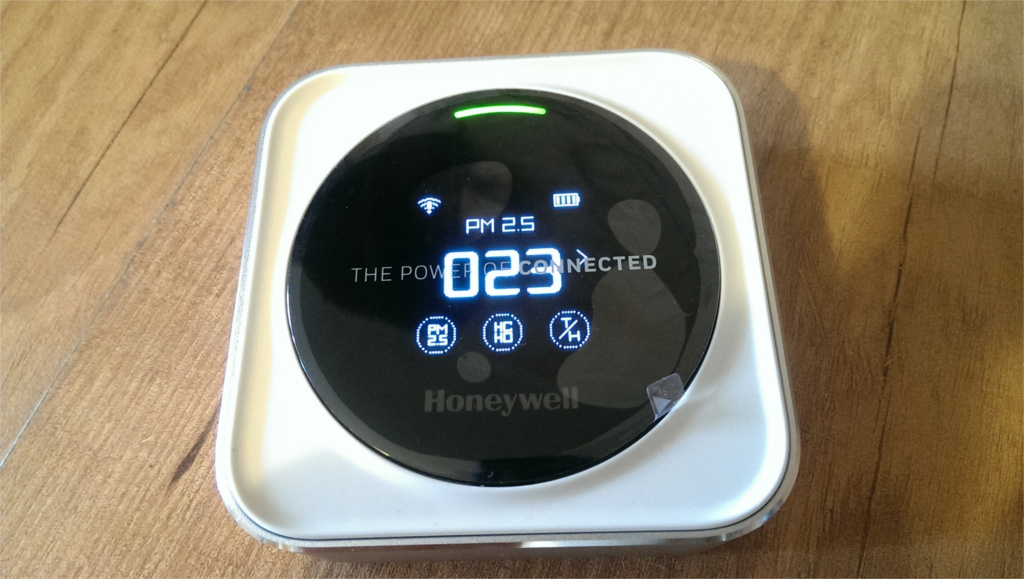
Formaldehyde:

Temperature, lower fine print - humidity:

Carbon dioxide:

Volatile organic compounds:

The generalized value, about it - further:
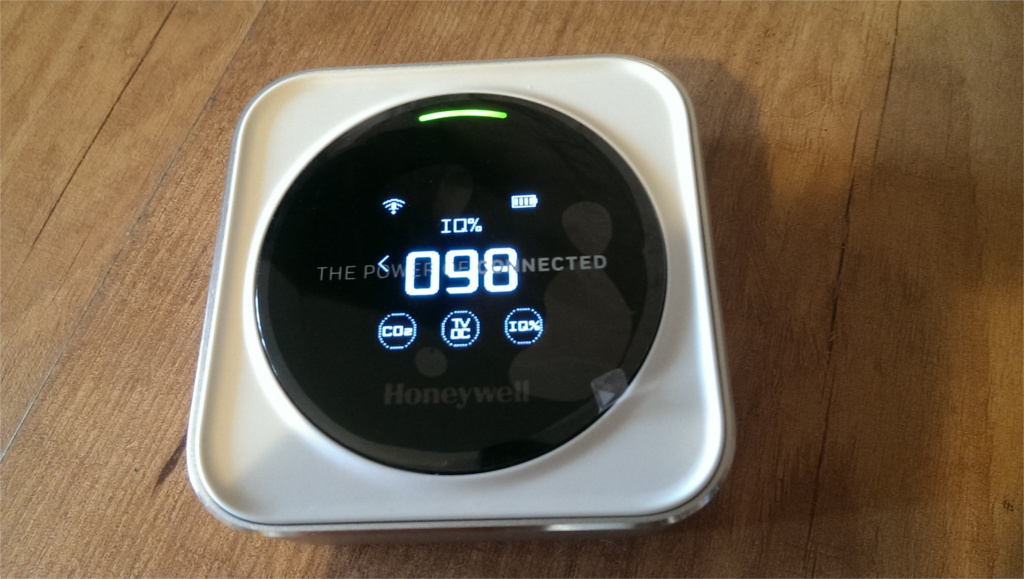
If any of the values assumes an undesirable value, the corresponding icon flashes. With a long inactivity of the user (he does not press either the upper button or the screen), the selected value is displayed in a more concise way:

In this mode, when an exclamation point appears in the circle at the bottom, you can press the upper button and see which icon is flashing.
We turn to the most interesting - pairing with a mobile device. We put the application for Android or iOS. To do this, we will scan the QR code on the back of the box or simply find the program by the name of the Honeywell IAQ (the device is HAQ, and the application is the IAQ).

Welcome screen application:

Check in:

Password setting:
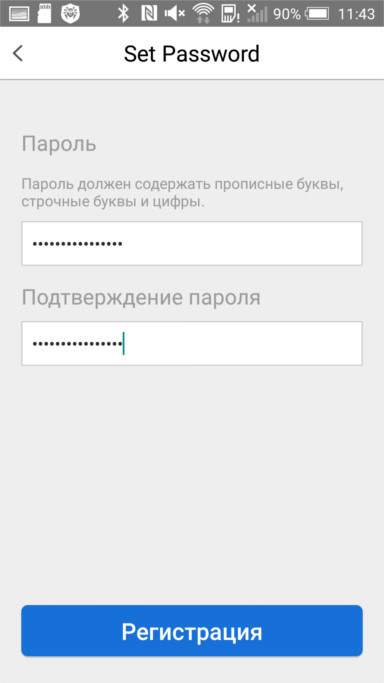
Login with username and password:

Add a device - click on the plus:
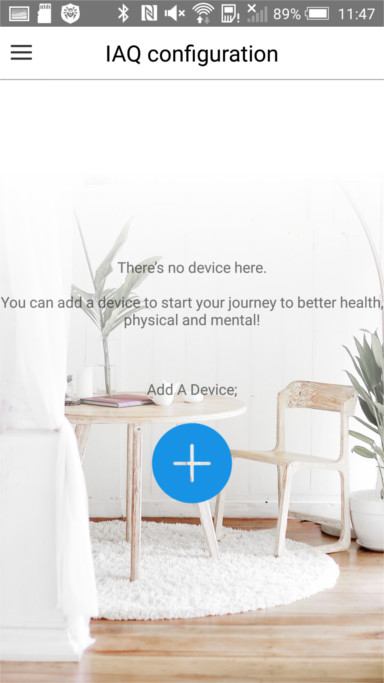
Next you need to do what is shown in the following screenshot:
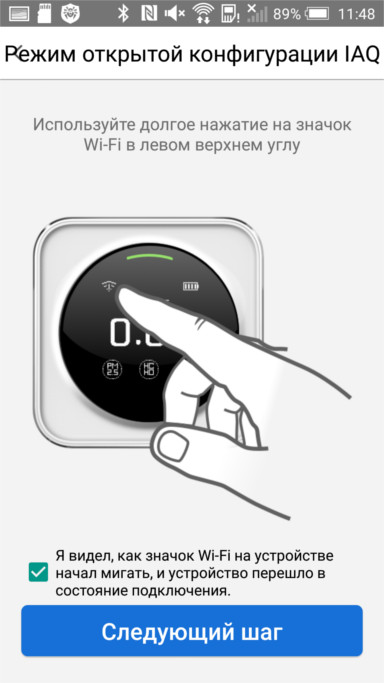
The device will become an access point, but there is no sense in connecting to it and trying to access 192.168.0.1 or 192.168.1.1. You need to go to the next screen:
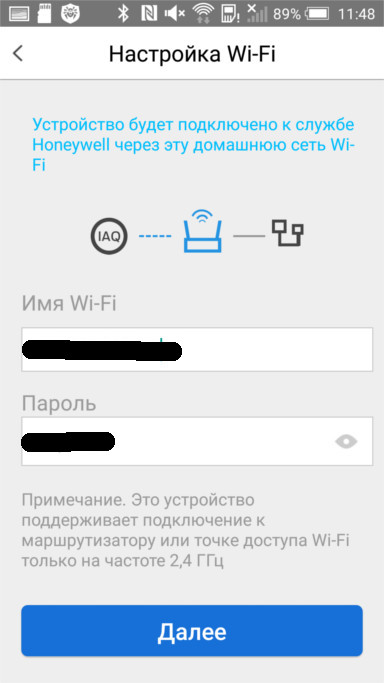
From the access point, the device will become a slave and connect to your router (only 2.4 GHz). Now the smartphone or tablet communicates with it through the cloud, and the application will continue to work when connected via a cellular network or another access point. If the manufacturer ever stops supporting the device as outdated, nothing terrible will happen - it will not stop displaying the parameters on the built-in display, it will simply not be so “outgoing” anymore.
After pairing, the WiFi icon looks like this:

It seems the connection is established, but the data does not go. What happened?


Forcibly terminate the application and run it again. Happened:

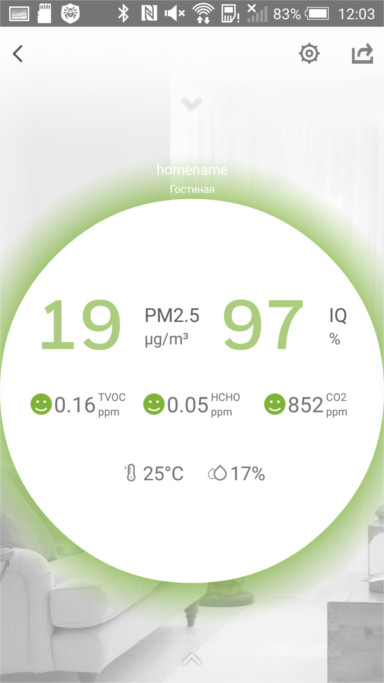
Charts are empty for now - the device did not work for long:

By clicking here on the question mark next to the parameter name, you can learn more about it:

A small glitch: you cannot leave the “back” button from this screen. You have to restart the application again.
There are a lot of settings:

I really liked the opportunity to set the thresholds for switching the colors of a two-crystal LED:
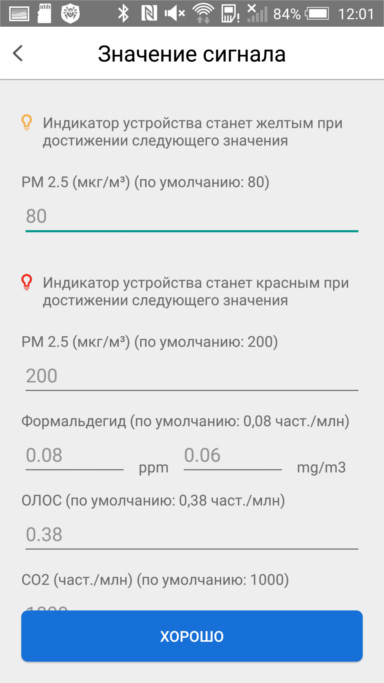
The display brightness is not customizable, so if it interferes at night, you can set the time interval during which it will be turned off:

The device can be used as an alarm clock:

Just do not turn off the router in this case at night:

Another feature is a stylish watch:
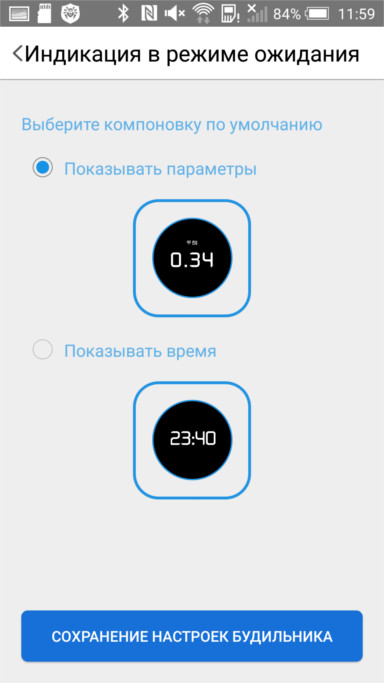
It looks like this:
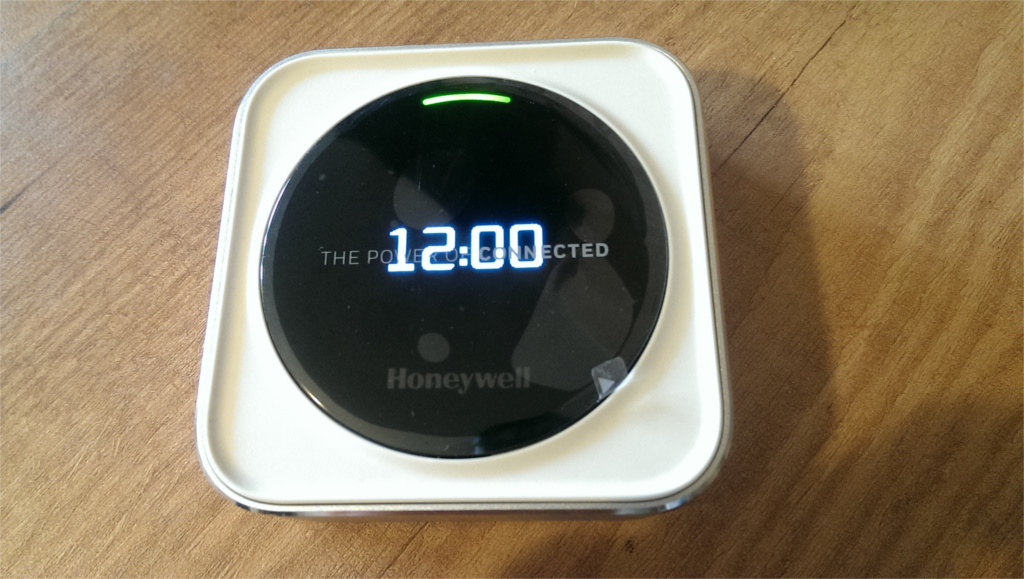
The application includes instructions, and in it, in particular, a list of types of measured values:
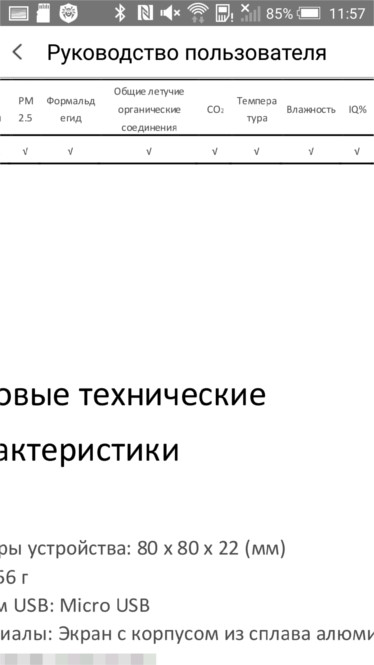
And the ranges of their measurements:
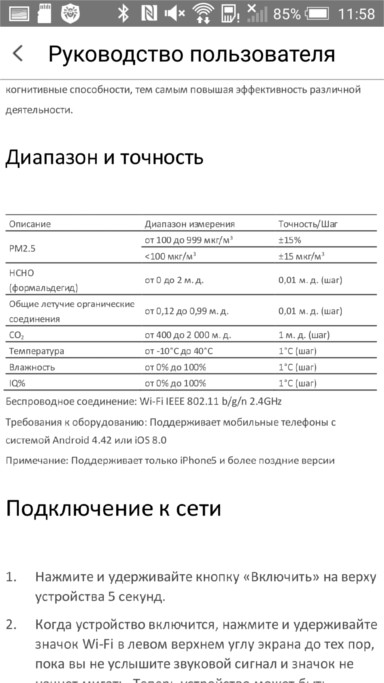
And a separate screen is highlighted for the story of what this generalized value is:

And some photos of the entrails:
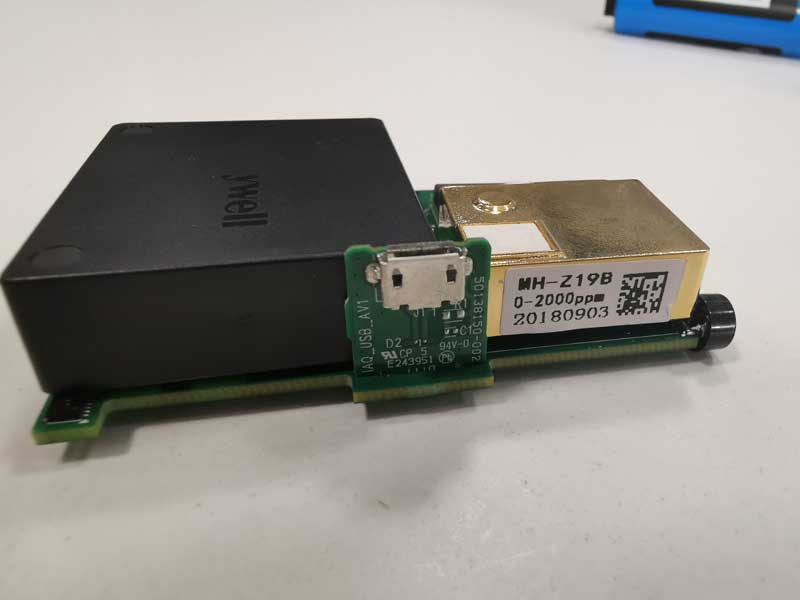
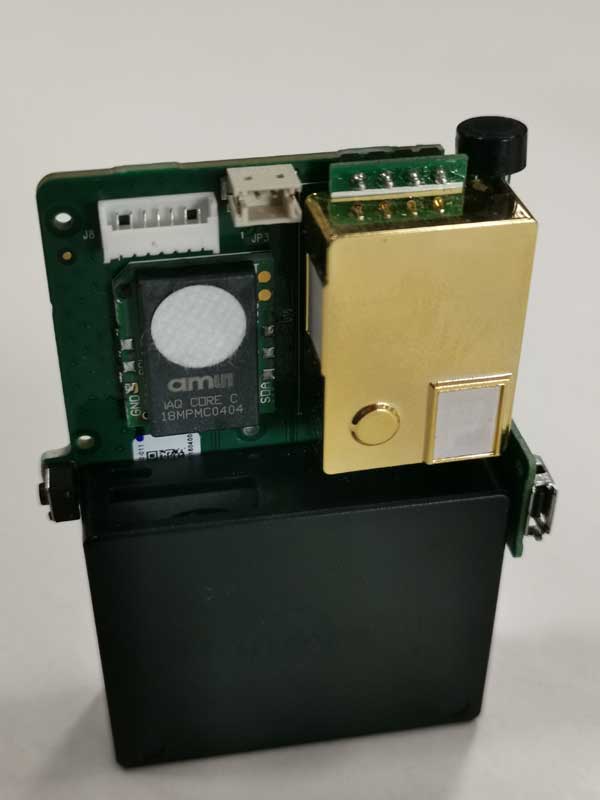
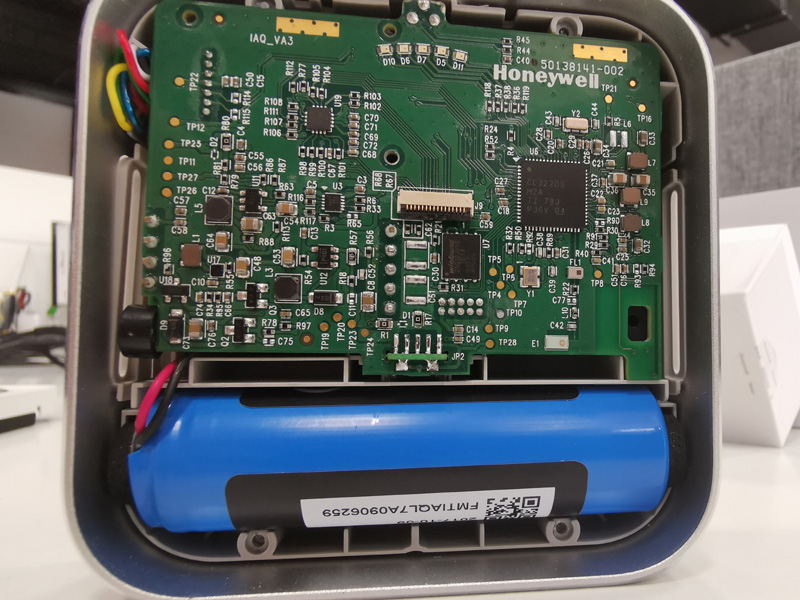
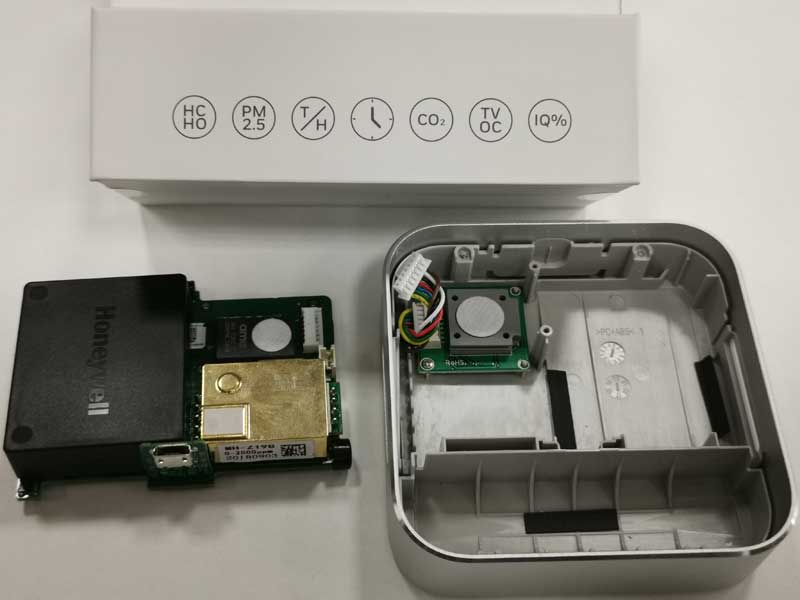

Any competent blogger with a fairly large portfolio can still participate in testing products from the “Dadzhet” company assortment. With the Honey promo code you can purchase a device with a 10% discount by clicking on the link . For wholesale purchases and special conditions, please write to retail@dadget.ru

The package of the device includes: a package, a box, an instruction manual, the device itself, shock absorbers for transportation, a Micro USB cable (it is not clear why it is not a Type-C after all).
')

First of all, my hands itched to drive the device through lsusb, and - nothing. From USB, it can only eat. But with the "top-level computer", as the classics say, it can be connected. Only in a different way.
View from two sides:


Also “lass 1 laser product” is not a glow lamp, as in a carbon dioxide detector .
After charging from a power supply unit with a load capacity of at least 1 A, the device operates from an internal battery. At the same time, a very quiet fan continuously rotates in it. There is nothing to cool inside, but the sensors work more efficiently if the air is forced through them.
The display of the device organically combines two technologies: one beginning of zero - PMOLED (flickers strongly, but the viewing angle is huge), the other - modern: a capacitive sensor (most likely not a matrix sensor, but from the platforms in those parts of the screen that need to be touched). When shooting flicker unnoticed. Above the display is a two-crystal LED (as ALS331A).
Six measured parameters are divided into two screens, between which you can switch by clicking on the flashing "blinkers". On each of the screens, you can click on the parameter icon, and its value will be displayed.
Particles less than 2.5 microns in diameter:

Formaldehyde:

Temperature, lower fine print - humidity:

Carbon dioxide:

Volatile organic compounds:

The generalized value, about it - further:

If any of the values assumes an undesirable value, the corresponding icon flashes. With a long inactivity of the user (he does not press either the upper button or the screen), the selected value is displayed in a more concise way:

In this mode, when an exclamation point appears in the circle at the bottom, you can press the upper button and see which icon is flashing.
We turn to the most interesting - pairing with a mobile device. We put the application for Android or iOS. To do this, we will scan the QR code on the back of the box or simply find the program by the name of the Honeywell IAQ (the device is HAQ, and the application is the IAQ).

Welcome screen application:

Check in:

Password setting:

Login with username and password:

Add a device - click on the plus:

Next you need to do what is shown in the following screenshot:

The device will become an access point, but there is no sense in connecting to it and trying to access 192.168.0.1 or 192.168.1.1. You need to go to the next screen:

From the access point, the device will become a slave and connect to your router (only 2.4 GHz). Now the smartphone or tablet communicates with it through the cloud, and the application will continue to work when connected via a cellular network or another access point. If the manufacturer ever stops supporting the device as outdated, nothing terrible will happen - it will not stop displaying the parameters on the built-in display, it will simply not be so “outgoing” anymore.
After pairing, the WiFi icon looks like this:

It seems the connection is established, but the data does not go. What happened?


Forcibly terminate the application and run it again. Happened:


Charts are empty for now - the device did not work for long:

By clicking here on the question mark next to the parameter name, you can learn more about it:

A small glitch: you cannot leave the “back” button from this screen. You have to restart the application again.
There are a lot of settings:

I really liked the opportunity to set the thresholds for switching the colors of a two-crystal LED:

The display brightness is not customizable, so if it interferes at night, you can set the time interval during which it will be turned off:

The device can be used as an alarm clock:

Just do not turn off the router in this case at night:

Another feature is a stylish watch:

It looks like this:

The application includes instructions, and in it, in particular, a list of types of measured values:

And the ranges of their measurements:

And a separate screen is highlighted for the story of what this generalized value is:

And some photos of the entrails:





Any competent blogger with a fairly large portfolio can still participate in testing products from the “Dadzhet” company assortment. With the Honey promo code you can purchase a device with a 10% discount by clicking on the link . For wholesale purchases and special conditions, please write to retail@dadget.ru
Source: https://habr.com/ru/post/448842/
All Articles